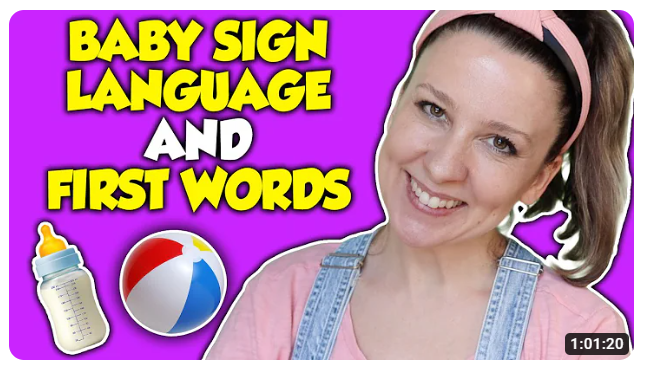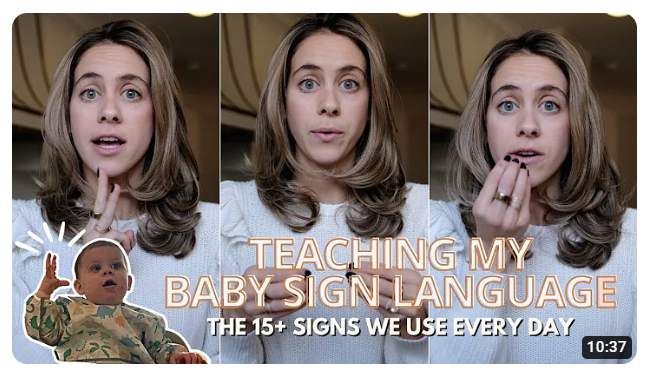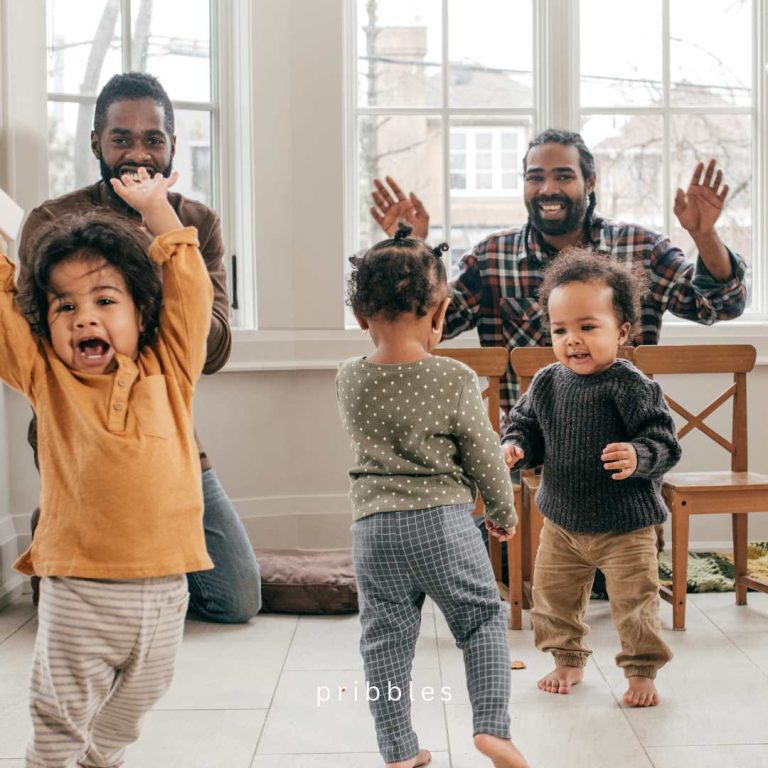Easy Ways to Teach Baby to Sign (Step-by-Step Pictures + FREE PDF)
Article summary: This article is about how to teach baby to sign- the pluses of teaching a baby to sign and the resources to do so.
I taught my oldest son a few signs when he was a toddler, as he was delayed in speech, and I felt it would be a positive experience for him to be able to communicate a few words while in speech therapy.
It turned out to be as helpful as suspected and didn’t appear to interfere with his speech therapy.
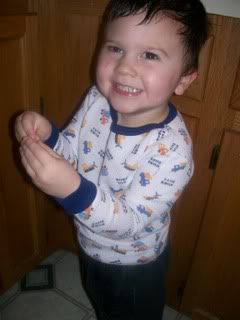
Affiliate links may be used in this post and if so I will receive a commission at no extra cost. I’m also part of the Amazon Affiliate (Associate) program where I earn a commission from sales made through my affiliate links. Read the full disclosure policy.
But, don’t just take my experience as your proof of the positive points to signing with your baby and toddler.
I did some deep research and will point you in the direction of more articles that also expand on this topic.
So, let’s jump in!
| More Baby Content |
| 2 under 2 must haves |
| Breastfeeding station ideas |
| Essentials for changing table |
| Baby puree recipes stage 2 |
| Indoor activities for toddlers |
| Chores for four year olds |
Teach Your Baby to Sign Resources
- Teach your baby to sign (an illustrative guide)
- Teach your baby to sign (Illustrated card deck)
- Teach your baby to sign, 2nd edition
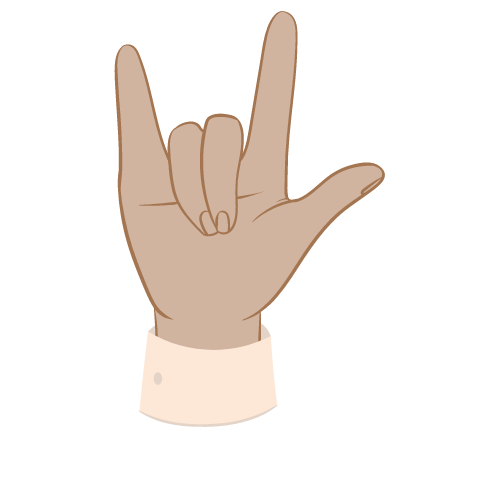
Pin It

Teach Baby to Sign
While my son did have speech delays that allow signing to help him communicate with us as he went through speech therapy, that doesn’t mean that is the only benefit to signing.
Babies that will speak at the normal age range can still benefit from signing. Along with the baby receiving benefits from signing, parents can enjoy the process of being able to communicate with their baby in this unique way.
Benefits of Signing for Babies
Teaching your baby sign language opens up a whole new world of communication between you and your little one.
Imagine the joy of understanding what your baby needs or wants before they can even speak!
One of the biggest benefits is reducing frustration—for both of you.
Babies often get frustrated when they can’t express themselves, leading to crying fits or tantrums.
But with signs, they can tell you when they’re hungry, thirsty, or need a diaper change.
It empowers them to communicate their needs effectively, which can boost their confidence and sense of independence.
Plus, it’s not just about the practical stuff; it’s also incredibly heartwarming to see your baby share their thoughts, feelings, and experiences through sign language.
It deepens your bond and makes you feel even more connected.
And hey, it’s fun! Learning together becomes a playful adventure, full of giggles and smiles.
So, while it might seem a bit unconventional at first, teaching your baby sign language is worth it—it’s like unlocking a secret language that brings you closer together.
When Can You Teach Signing to Babies?
You can start teaching your baby sign language as early as six months old.
Yep, even before they’re saying their first words!
At this age, babies are starting to understand language and gestures, making it the perfect time to introduce signs.
Don’t worry about waiting until they’re older or more “ready”—babies are like sponges, soaking up information from the world around them.
Plus, starting early gives you more time to practice and reinforce signs, making it easier for your little one to catch on.
So, grab some picture books, nursery rhyme videos, or whatever works for you, and dive in!
Remember, it’s all about having fun and building that special bond with your baby.
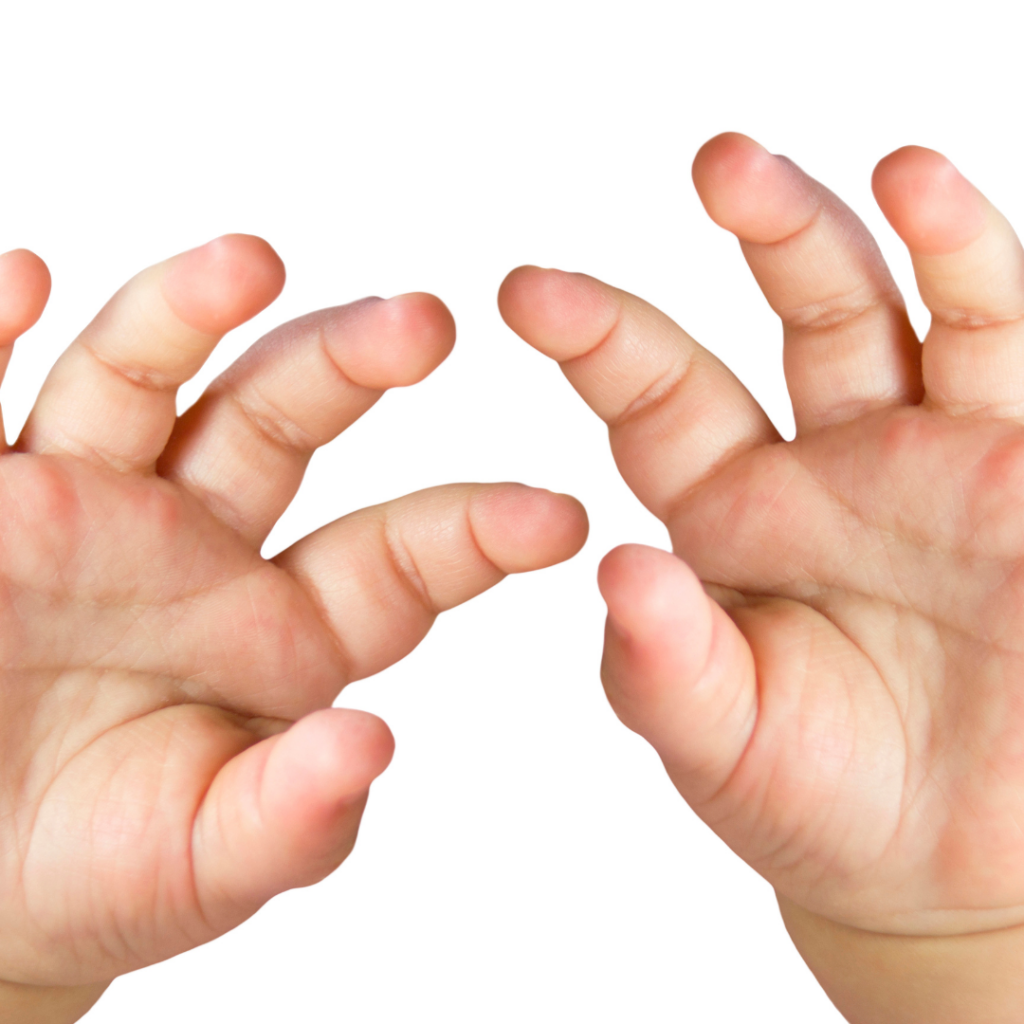
Easy Signs to Start With
When you’re just starting out with baby sign language, keeping it simple is key.
Focus on signs that are easy to do and relate to your baby’s daily needs and experiences. That’s what I did.
Some of the best signs to start with include:
- more
- eat
- drink
- milk
- all done
- sleep
These signs cover essentials like food, drink, and sleep, making them super practical for everyday communication.
They’re also easy for babies to understand and mimic, which helps them catch on quickly.
So, grab your baby’s attention, show them the sign while saying the word aloud, and soon enough, they’ll be signing back to you!
Keep it fun and consistent, and watch your little one blossom into a signing pro.
Next Step-Up Signs for Baby
As your baby becomes more comfortable with basic signs and starts to master them, you can gradually introduce more complex and advanced signs.
These signs can expand your baby’s vocabulary and understanding of the world around them.
Some good signs to consider introducing at this stage include:
Animals: Signs for common animals like “dog,” “cat,” “bird,” or “fish” can help your baby learn about different creatures and make connections with the world around them.
Colors: Teaching signs for basic colors such as “red,” “blue,” “green,” etc., can enhance your baby’s ability to identify and express colors as they encounter them in their environment.
Family Members: Introducing signs for family members like “mom,” “dad,” “grandma,” and “grandpa” allows your baby to start recognizing and referring to important people in their life.
Emotions: Signs for emotions such as “happy,” “sad,” “angry,” or “excited” help your baby express their feelings and understand the emotions of others.
Actions: Signs for common actions like “play,” “read,” “jump,” or “dance” can enrich your baby’s ability to communicate their desires and activities.
Places: Signs for common places such as “home,” “park,” “store,” or “school” can help your baby understand and communicate about different locations they encounter.
Introducing these more complex signs gradually and in context can help keep the learning process enjoyable and manageable for your baby.
Remember to be patient and provide plenty of opportunities for practice and reinforcement.
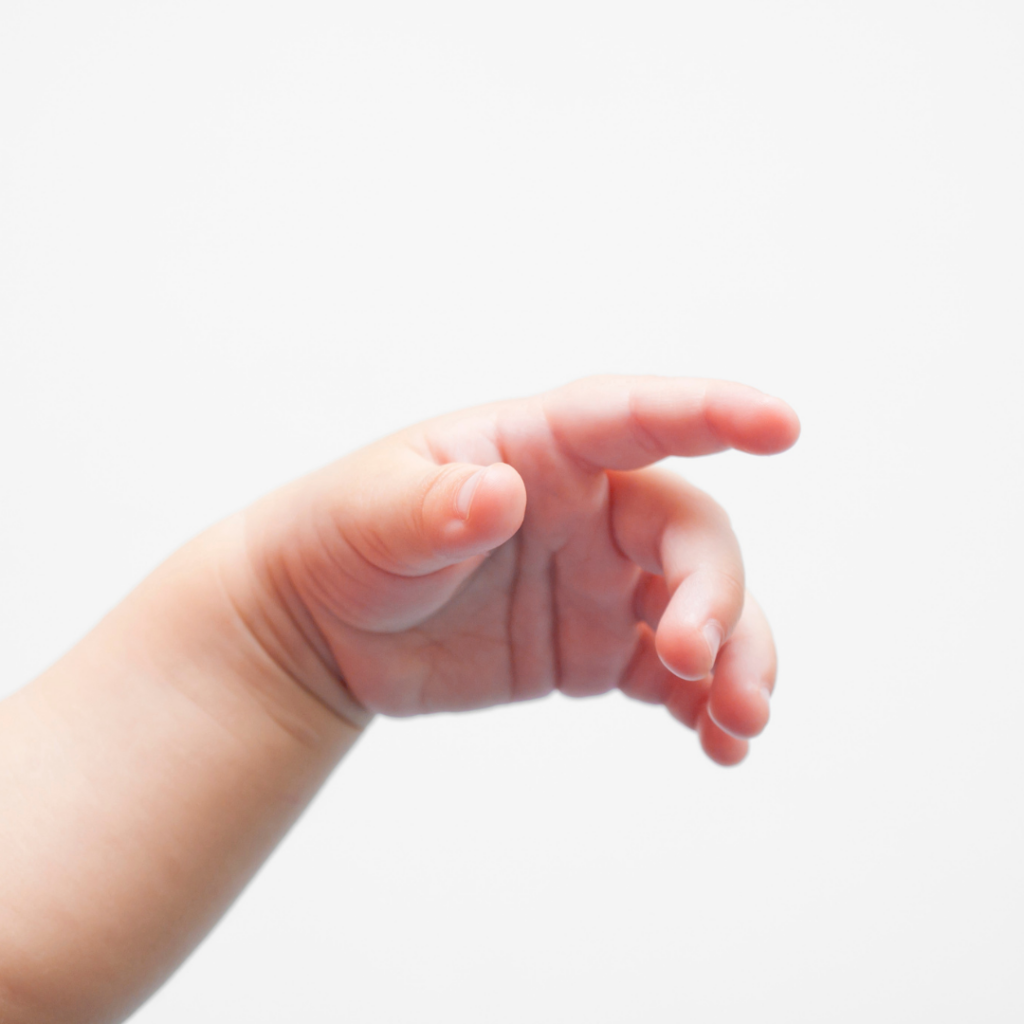
Sign Language Resources
Below you’ll find free and paid resources to help in teaching your baby sign language.
Click the image below to watch the video.
Click the image below to watch the video.
More Articles About Signing for Babies:
- How to Teach Baby 25 Key Words in Baby Sign Language
- How to Teach Your Baby Sign Language
- How to teach your baby sign language: 10 common baby signs
Books and Videos:
- Teach your baby to sign (an illustrative guide)
- Teach your baby to sign (Illustrated card deck)
- Teach your baby to sign, 2nd edition

Baby Sign Language FAQ
Q: When should I start teaching my baby sign language?
A: You can start teaching your baby sign language as early as six months old! That’s when they’re starting to understand language and gestures, making it a prime time to introduce signs.
Q: How do I know if my baby is ready to start learning sign language?
A: Babies are like sponges, soaking up information from the world around them. If your baby is showing interest in communication, like babbling or pointing, they’re ready to give signing a try.
Q: Do I need to be fluent in sign language to teach my baby?
A: Nope, not at all! You don’t need to be a signing expert to teach your baby. Just pick a few basic signs to start with, and learn them together—it’s all about having fun and bonding with your baby.
Q: What are the best signs to start with?
A: Keep it simple! Start with signs for everyday needs like “more,” “eat,” “drink,” “milk,” “all done,” and “sleep.” These are practical and easy for babies to understand and mimic.
Q: How long does it take for babies to learn sign language?
A: Every baby is different, so there’s no set timeline. Some babies might start signing back within a few weeks, while others might take a bit longer. Just be patient and keep practicing.
Q: Will teaching my baby sign language delay their speech development?
A: Nope, quite the opposite! Learning sign language can actually enhance your baby’s language development. It gives them an early way to communicate, which can boost their confidence and encourage them to start speaking sooner.
Q: What if my baby doesn’t seem interested in signing?
A: Don’t worry. Every baby learns at their own pace. Keep modeling the signs, and eventually, they’ll catch on. And remember, it’s all about making learning fun and engaging for your little one.
Q: Can teaching my baby sign language strengthen our bond?
A: Absolutely. Signing with your baby is a special way to connect and communicate, even before they can speak. It deepens your bond and makes you feel even more connected to each other. Plus, it’s super adorable.

Common Signs for Babies: Picture Guide
1- More
Below is how the sign “more” looks. You’ll bring your fingers together and touch them like the picture below.
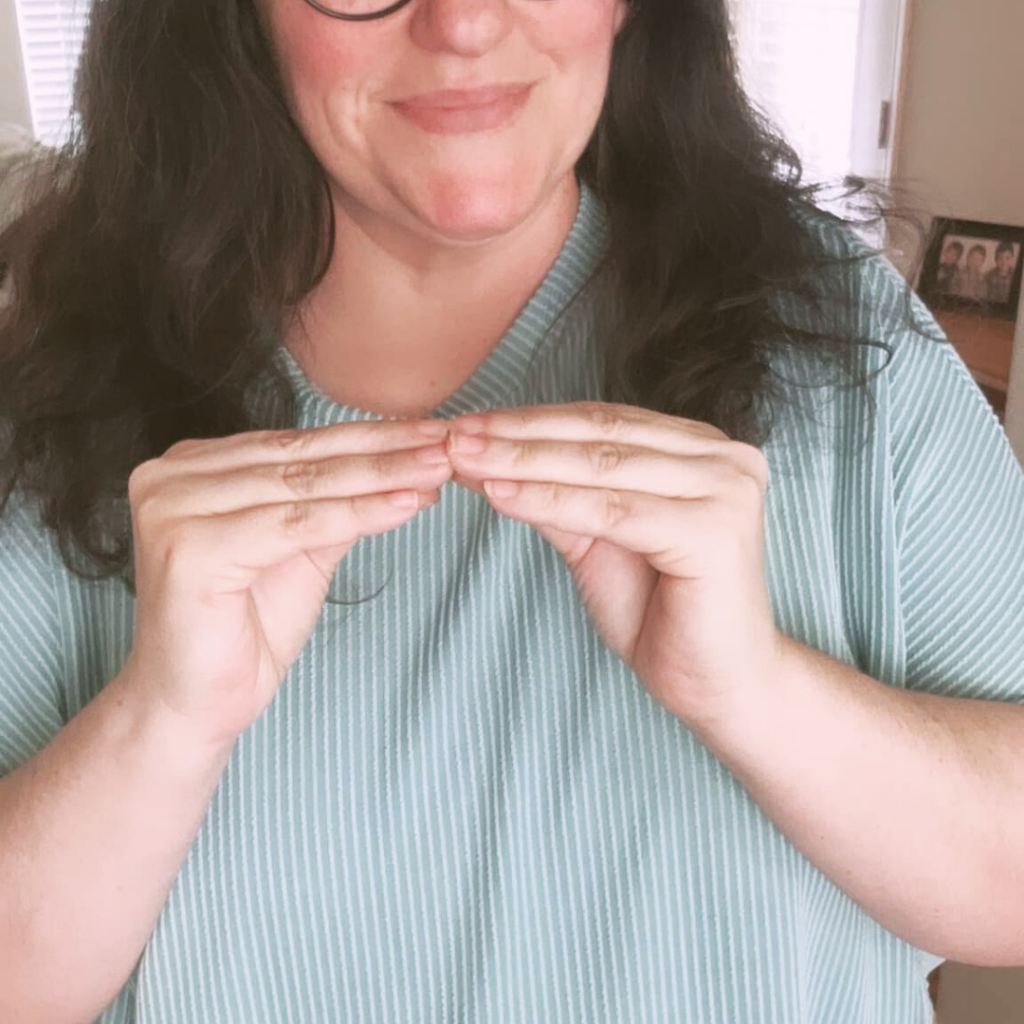
2- Eat
Below is how the sign “eat” looks. Bringing your fingers together to your thumb, you’ll bring your hand up to your mouth for “eat”.

3- Drink
Below is how the sign “drink” looks. There are a couple of differently demonstrated ways to sign drink with your baby. One is like I’m doing below, where you make a “c” type sign, that looks like you’re holding a cup. You can move your cupped hand in a rotating forward and backward motion to indicate drinking from a cup.

4- Milk
Below is how the sign “milk” looks. You’re simply squeezing your hand from open to close to sign the word milk. It looks much like if you’re milking a cow.
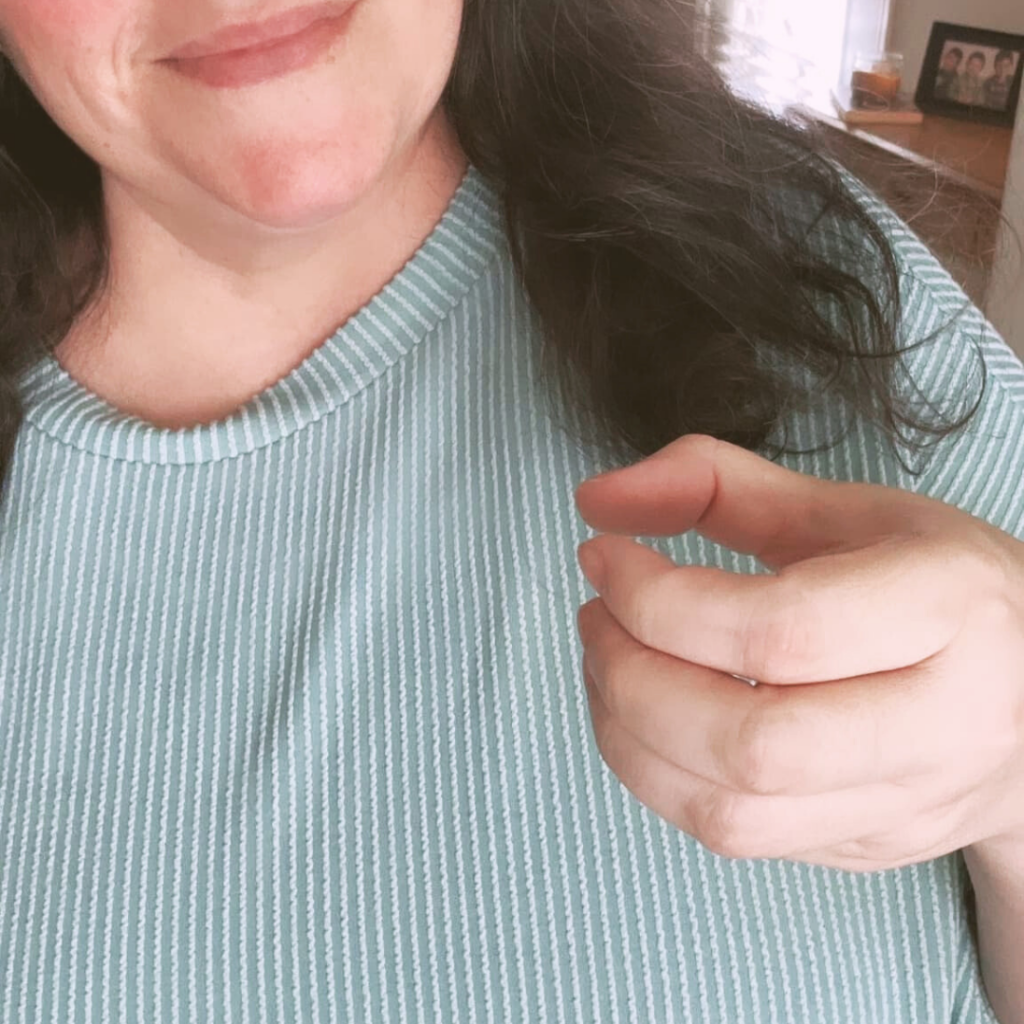
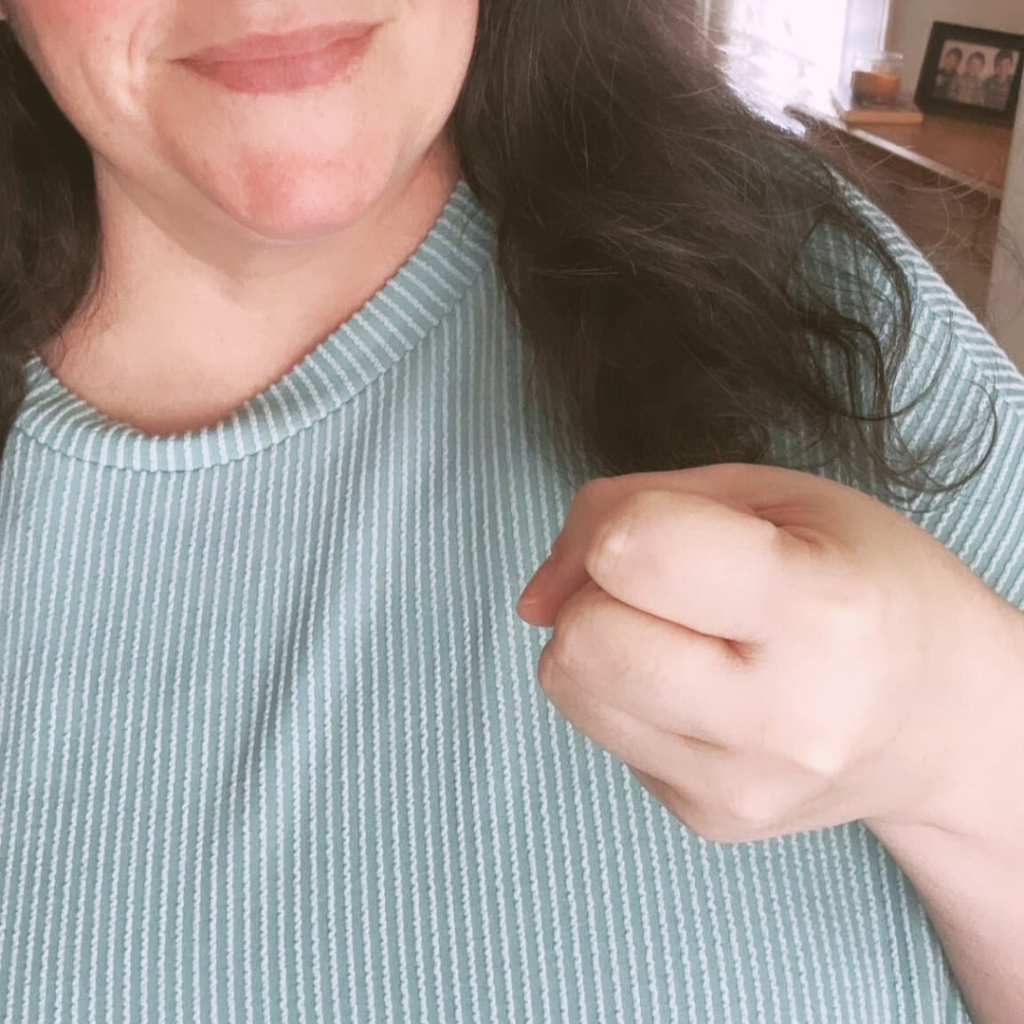
5- All Done
Below is how the sign “all done” looks. Starting with your palms toward you, you’ll then move your hand facing the other way as a way to show you’re done.
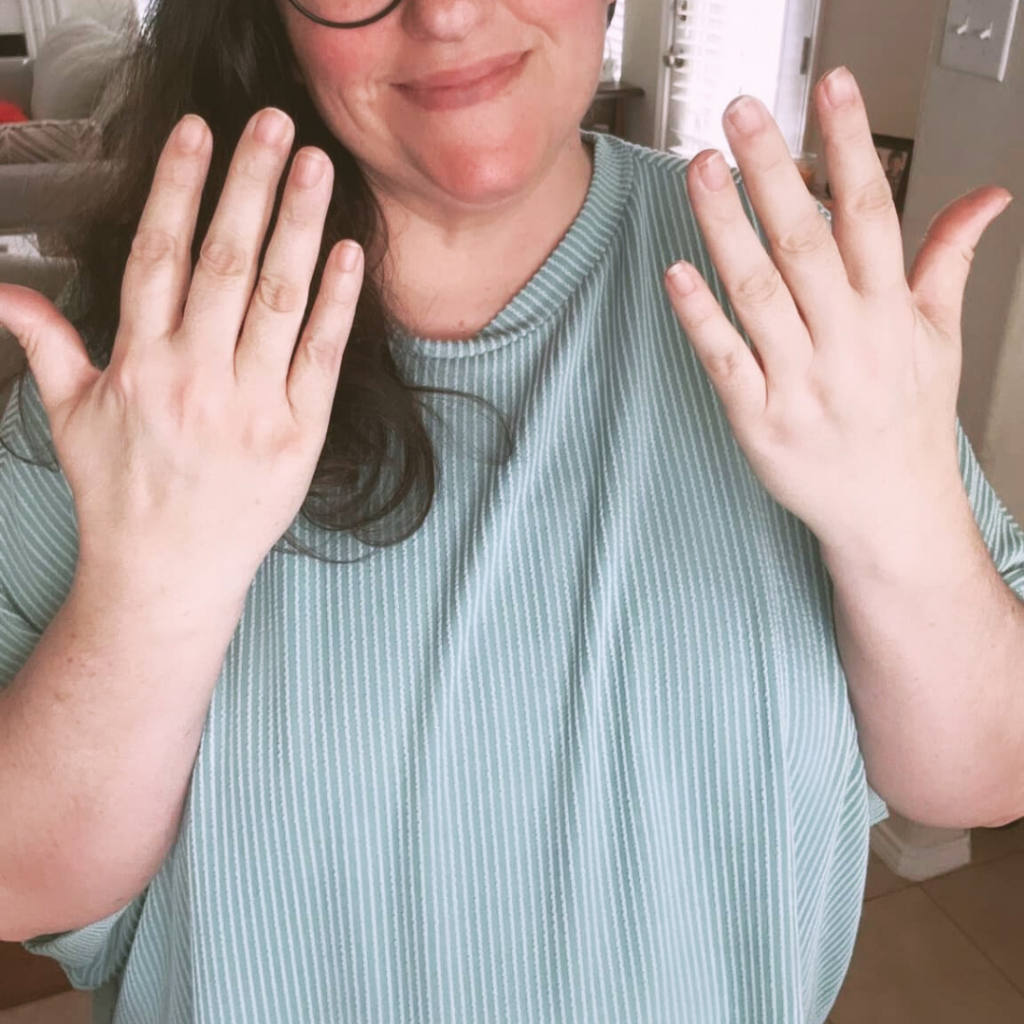
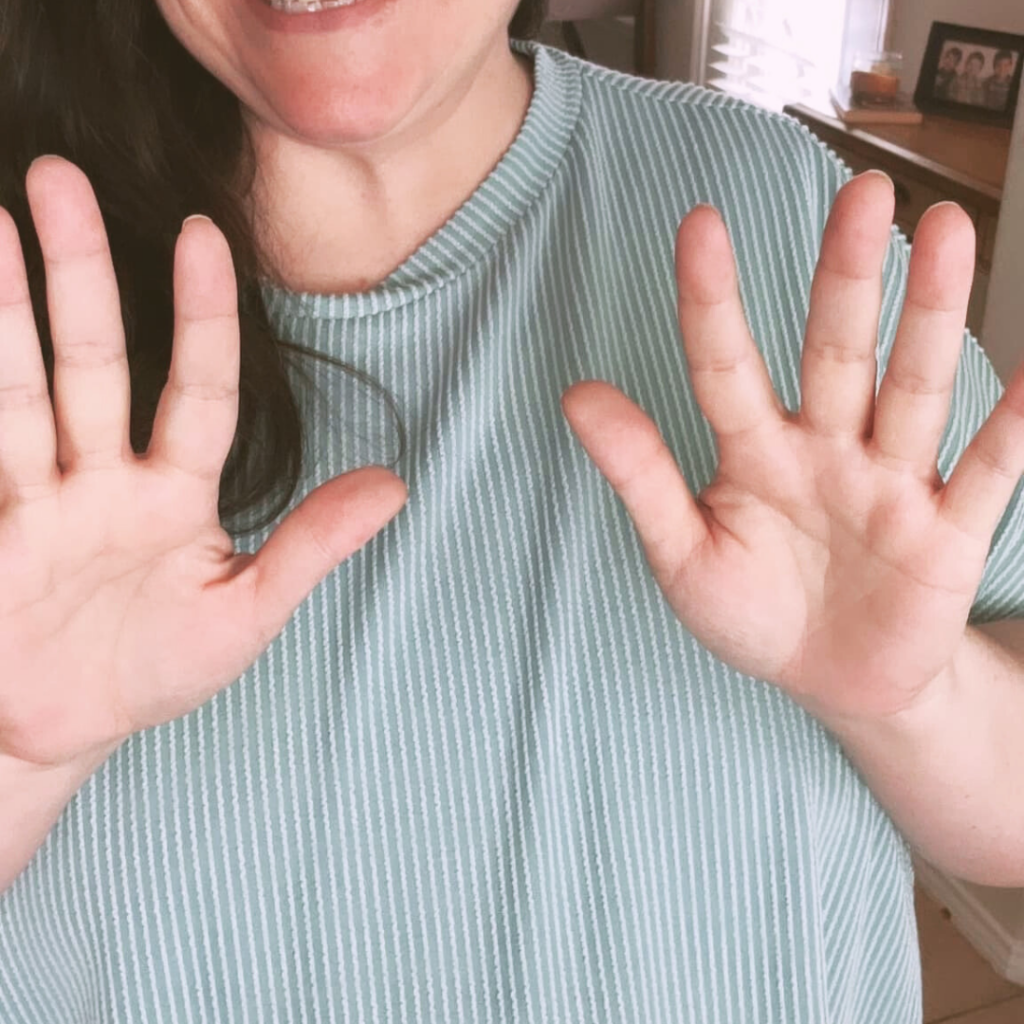
6- Sleep
Below is how the sign “sleep” looks. Start with your hand open, over your face, and pull it down your face, closing your eyes. This is the sign for sleep.
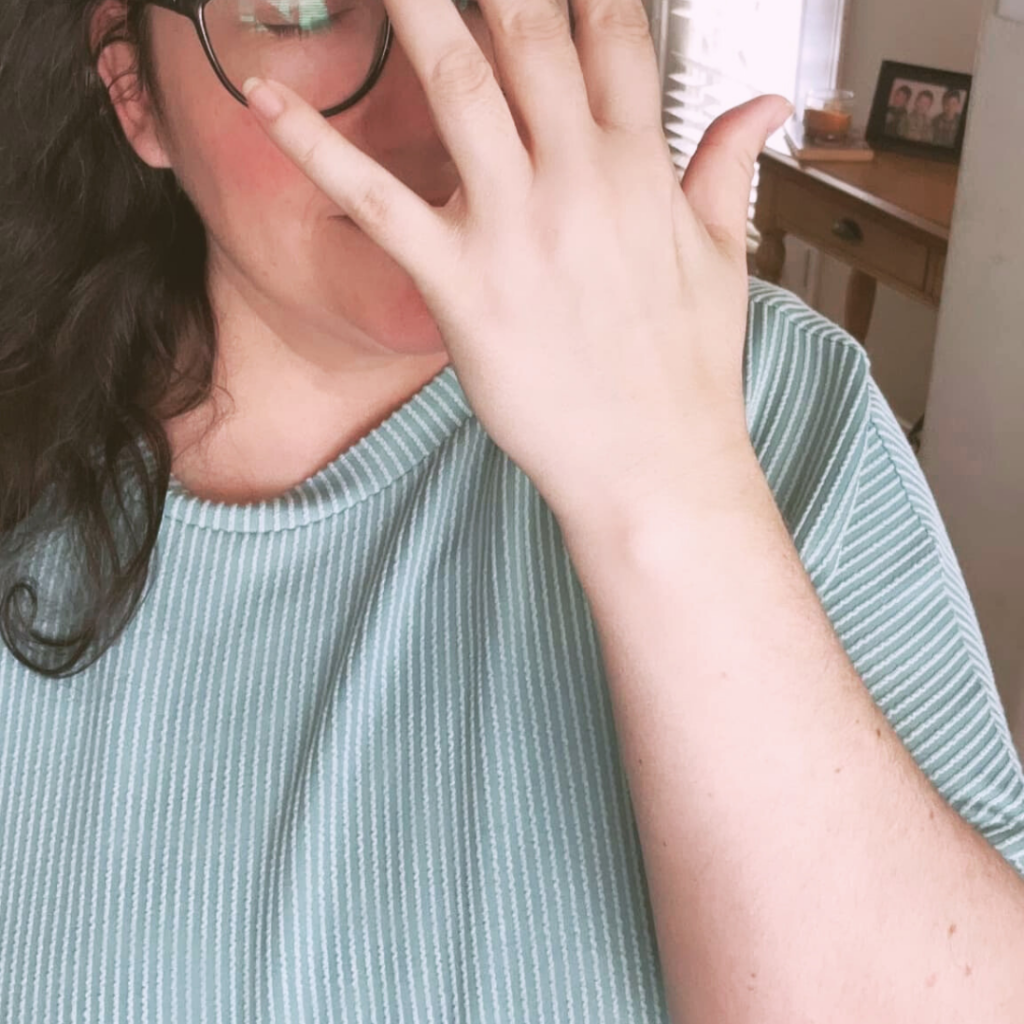
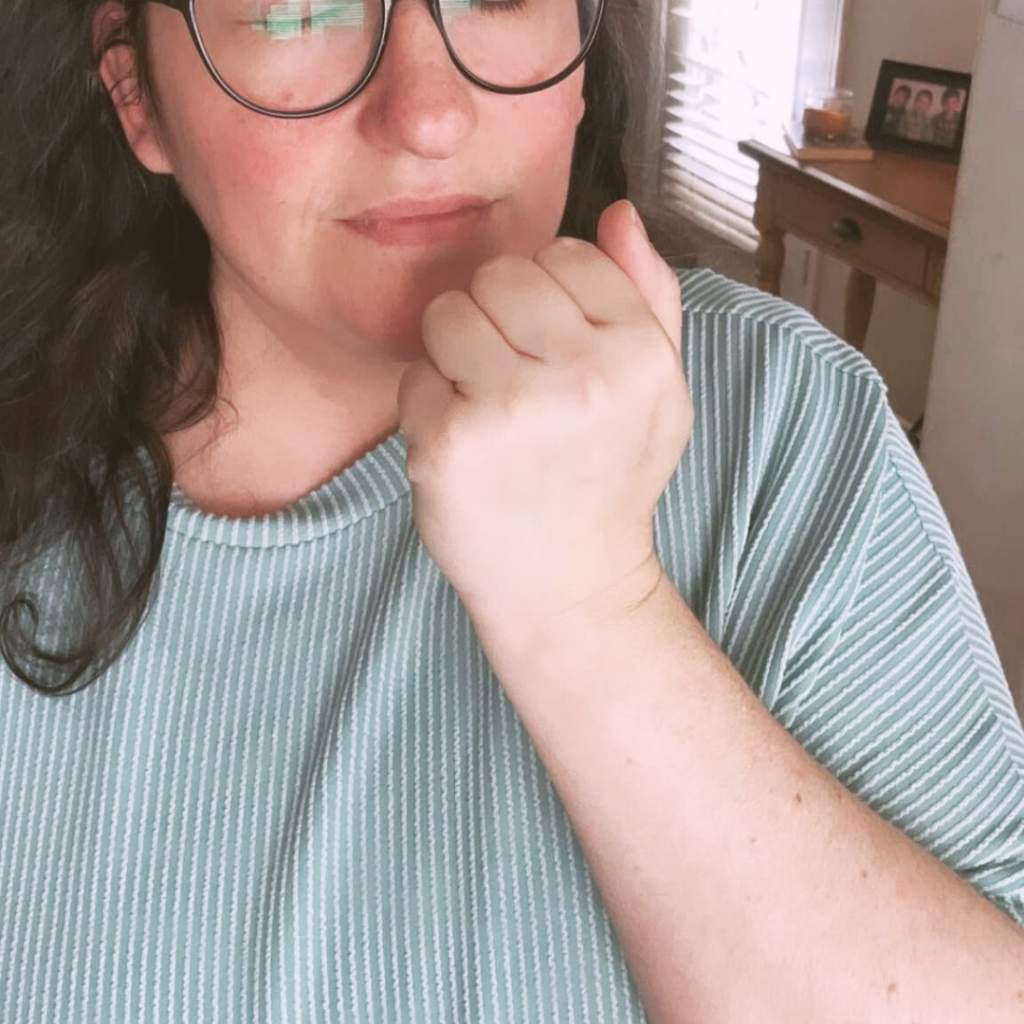
In Closing: Wrapping Up Sign Language for Babies
Teaching your baby sign language isn’t just about learning a few hand gestures—it’s about unlocking a whole new world of communication and connection.
By starting early and keeping it fun and simple, you can empower your baby to express their needs, thoughts, and feelings long before they can speak.
And the benefits go beyond just practical communication; signing with your baby strengthens your bond, boosts their confidence, and sets them up for success in their language development journey.
So, whether you’re signing for “more,” “eat,” or “love,” every gesture is a step towards deeper understanding and stronger connection between you and your little one.
Embrace the journey, celebrate the milestones, and cherish the moments of signing together—it’s a beautiful way to communicate with your baby from the very beginning.
Pin for later reading


